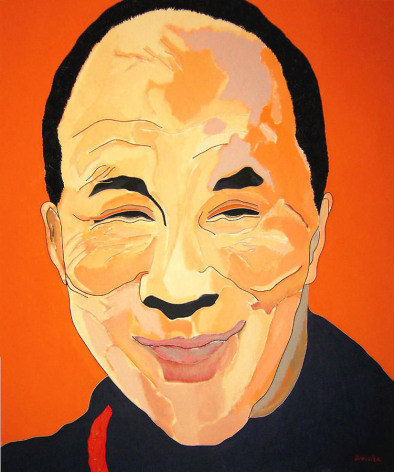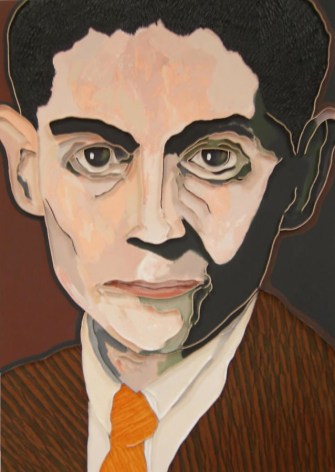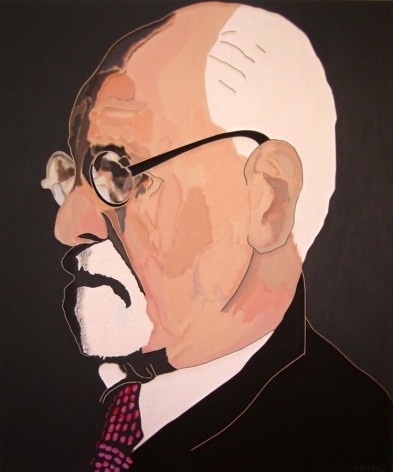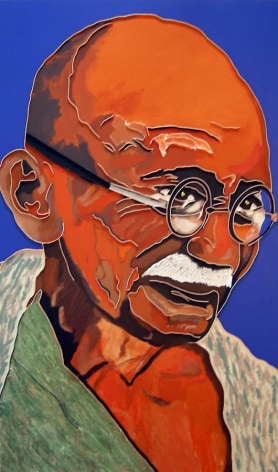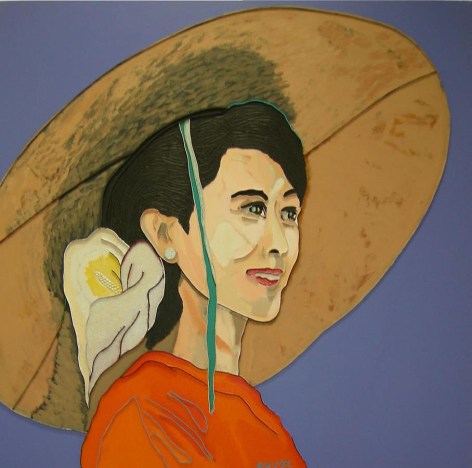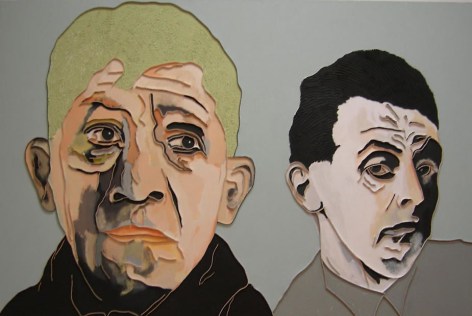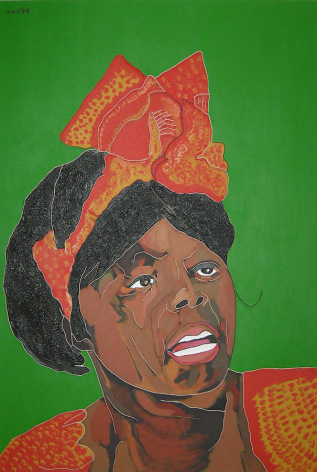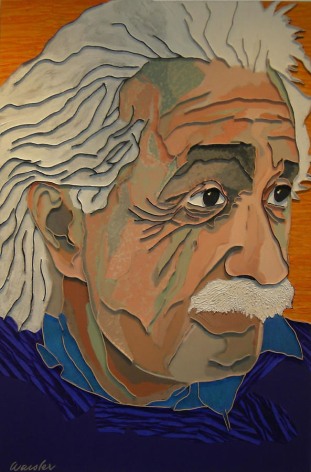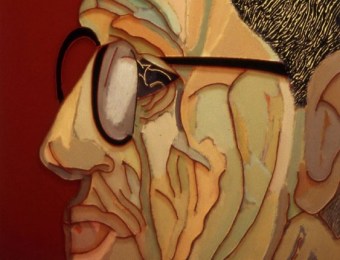
Sundaram Tagore Gallery is pleased to present new works by Lee Waisler in an exhibition titled Dimensional Portraits. The show opens with a cocktail reception Thursday, March 12, 2009, from 6:30 to 8:30 p.m. and closes April 11, 2009.
Lee Waisler is a Los Angeles-based artist who paints seductively beautiful images using a rich variety of materials, each replete with cross-cultural symbols and references. Having practiced abstraction for decades, he returned to figuration full force about four years ago by launching a series of moving portraits of historical and contemporary figures. A deep empathy for the human spirit lies at the core of Lee Waisler's portraiture. "I cannot but paint humanity," says Waisler. "While most of my portraits are of people who are no longer alive, they have all cast luminous shadows much like starkly placed lights on a deeply darkened road." In this latest series of portraits, the artist presents a global group of iconic figures spanning different disciplines. Each of these portraits is a reminder of how a single individual can change the way society thinks.
The exhibition curator Sundaram Tagore says, "These are portraits of people who have expanded our understanding of the world. They are historic and heroic figures such as Albert Eisenstein, Aung Sun Su Kyi, and Franz Kafka." Among Waisler's contemporary subjects are micro-credit guru and Nobel laureate Muhammad Yunus; the renowned economist Joseph Stieglitz; and the environmentalist and human rights activist Wangari Muta Maathai, the first African woman to receive the Nobel Peace Prize. Often reaching six feet in height, these portraits possess a monumental and haunting quality.
Waisler's earliest works, which date to the 1960s, were socially and politically charged. He tackled historical events such as the Holocaust, the Vietnam War, and the civil rights movement. Gradually, he became fascinated with Eastern philosophy, and his paintings became increasingly abstract. A journey to India, at the invitation of then Indian Prime Minister I. K. Gujral, in the mid-nineties was a turning point. Waisler became acutely aware of the struggle for survival in a deprived country. He discovered the power of humanity. "The people were seared in my heart and mind," he says. After this experience, he felt compelled to move away from pure abstraction and incorporate figuration.
Never quite abandoning abstraction, he began creating tactile works, which he calls "dimensional portraits." His œuvre shifted into a new key. Layering his canvases with thick pigments, he incorporates organic materials for their innate associative values: sand for time, wood for life, and glass for light. With strips of wood and blocks of color, he creates finely nuanced faces and figures.
Waisler's work is in some of the most influential museum collections in the world, including those of the Metropolitan Museum of Art, New York; the Victoria and Albert Museum, London; The Tel Aviv Museum of Art; the Brooklyn Museum of Art; The Smithsonian Institution, Washington D.C.; The Bibliotheque Nationale, Paris; the National Gallery of Art, New Delhi; and The Indian Museum, Calcutta.
For more information, please email: hongkong@sundaramtagore.com or call 212.677.4520


